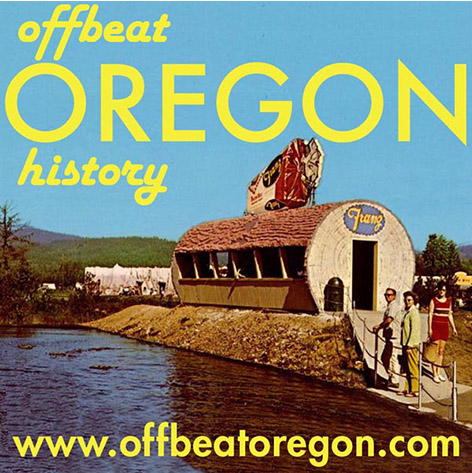
Looking for more?
On our Sortable Master Directory you can search by keywords, locations, or historical timeframes. Hover your mouse over the headlines to read the first few paragraphs (or a summary of the story) in a pop-up box.
... or ...
PRINEVILLE, CROOK COUNTY; 1880s:
Lynching kicked off scary vigilante era in Prineville
Audio version: Download MP3 or use controls below:
|

An early-morning lynchingVery early the next morning, though, as Deputy Luckey was sitting by the stove, the Vigilantes made their first move. “The door was suddenly opened and I was caught and thrown backward on the floor and firmly held, while my eyes were blinded and immediately a pistol was fired rapidly 5 or 6 times. I heard someone groan about the time the firing ceased,” Deputy Luckey wrote in a subsequent report to his boss. “I went to Langdon and found him dead. I looked around and a masked man stood at each door, warning by ominous signs for no one to undertake to leave the room.” The Vigilantes then grabbed Harrison — it’s not clear whether he was in the room with Langdon when the masked riders burst in, or whether he came later, attracted by the activity. Ignoring his panic-stricken pleas, the masked men put a rope around his neck and used a horse to drag him through the streets of Prineville to the bridge, where they strung his by-now-lifeless body from a banister. Vigilante ruleIt was the beginning of the Vigilantes’ reign of their own special kind of law and order in Prineville country — enforced by masked riders with drawn guns and ready ropes. “The ‘Vigilantes’ who banded together that night to shoot Langdon and lynch the innocent Harrison stuck together for two years, getting bolder and bolder,” Blakely told the Oregonian. The group took to sending death threats, with skull-and-crossbones emblems, to various people around town — some of whom, certainly, were rustlers and criminals, but others of whom were simply fellow ranchers opposed to their methods. Colonel Thompson claims the escalation in Vigilante activity was in response to a bold increase in crime, apparently by the unknown gang of 10 outlaws first encountered in Langdon’s brother’s house. Public opinion starts to turnPublic opinion appears to have been on the Vigilantes’ side at first, which gives some credence to Colonel Thompson’s claim that the group formed out of frustration with ineffective local law enforcement. But it didn’t stay on their side for long. In fact, it seems to have turned on them later that year, in December, when the Vigilantes lynched a horse jockey named Charles Luster. The Vigilantes claimed Luster had been about to steal some horses, but most folks in town happened to know that Luster had just refused to throw a horse race at the behest of some prominent Vigilantes who’d bet against him; the sudden declaration that Luster was a horse thief seemed disturbingly convenient. Moreover, in the process of getting even with Luster, the Vigilantes also killed another young man, a friend of Luster’s who was with him that night; the two of them ended up hanging from a juniper tree together with the rancher they’d been having dinner with, and the rancher they’d been working for was shot through a window at a Prineville saloon the same night. Colonel Thompson later tried to claim the four of them had been part of a gang that had ridden through Prineville earlier in the day shooting into the air and threatening to burn the town down, but his is the only account that mentions anything of this kind; again, it seems likely that he was just making up a story to justify the Vigilantes as they trumped up accusations of crimes as cover stories for the murder of inconvenient men. After this incident, the residents of Prineville definitively turned against the Vigilantes. But law enforcement was still extraordinarily light and ineffective throughout the Prineville area. Sure, the Vigilantes were throwing their weight around, but could anything be done about them? And would a Crook County without the Vigilantes be even worse? More innocent people were going to have to die before the town would commit to doing something about it. We’ll talk about how that played out in next week’s column.
|
©2008-2023 by Finn J.D. John. Copyright assertion does not apply to assets that are in the public domain or are used by permission.


